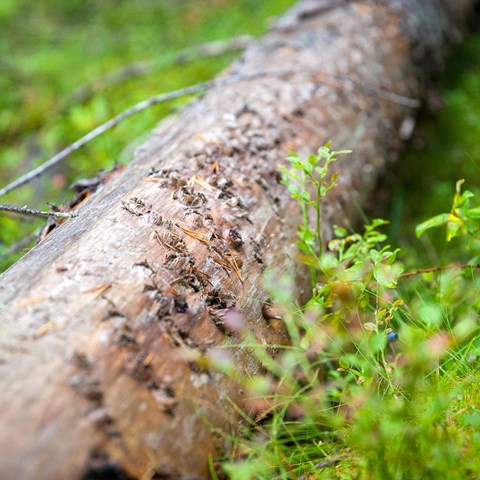Biological diversity of forests is a prerequisite for viable ecosystems, but inventorying all the species in a forest takes a long time and requires a great deal of very detailed knowledge. Therefore, in many types of methods, natural values are often assessed using indicators. How well do these different methods work? SLU researchers investigated this in a study.
The study was carried out in nearly 80 coniferous forests in northern and southern Sweden. There, the researchers investigated an inventory method that several forest companies and landowners' organizations use. The method assesses a forest's natural values based on the diversity of living environments (habitats) and is used in, for example, nature conservation inventories. It is called the "forest biologists' method" and is important to evaluate it scientifically, to ensure reliable ways of identifying forests with high natural values.
- The method works well to identify forests with high diversity and to assess nature values. If the method is to be used to prioritize conservation among different forests, it works well within a region, but it is more difficult to make comparisons between regions, for example northern and southern Sweden, says Anne-Maarit Hekkala, researcher at SLU who has led the study.
Dead wood indicates conservation species
The researchers also compared the forest biologists' method with measuring so-called structural variables in the forest, for example the amount of dead trees, old trees or the proportion of deciduous trees. In all areas, inventories of species of interest to conservation were also carried out, which functioned as a control of the area's biological diversity. Mushrooms, lichens, mosses and plants of conservation value were inventoried.
- The volume of dead trees is the structural variable that best explains both the occurrence and amount of conservation species, says Jörgen Sjögren, researcher at SLU who also participated in the study.
In summary, the researchers conclude that the volume of dead trees and the forest biologists' method work well to identify forests with high nature values.
- We have seen that there is a great need for simple, reliable and not too expensive methods to identify forests with high natural values. Knowledge of such forests is needed to know which forests should be protected, and which can be commercially exploited. With that knowledge, it is possible to avoid forests with high natural values being lost, says Anne-Maarit Hekkala.
Read the scientific article
Anne-Maarit Hekkala, Mari Jönsson, Simon Kärvemo, Joachim Strengbom, Jörgen Sjögren. Habitat heterogeneity is a good predictor of boreal forest biodiversity. Ecological Indicators. April 2023. https://doi.org/10.1016/j.ecolind.2023.110069
